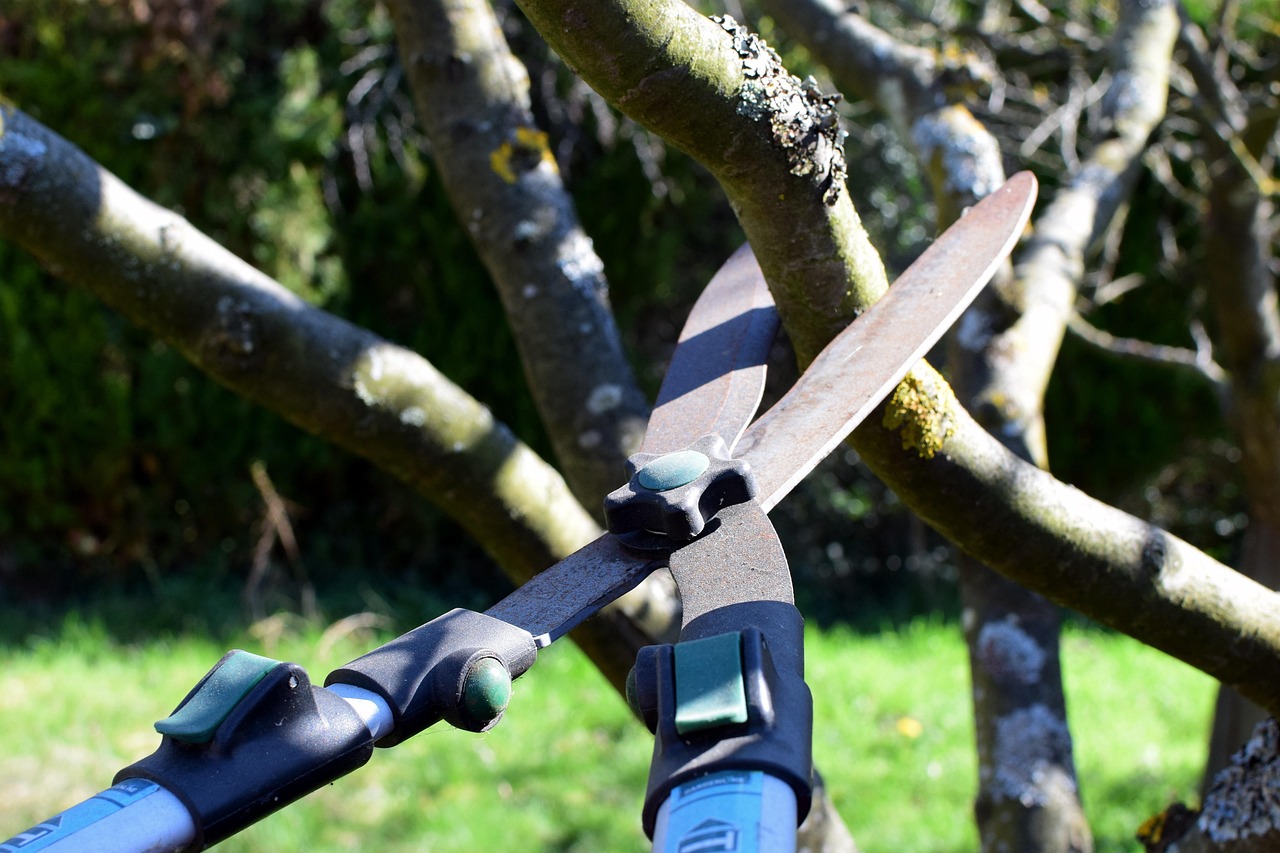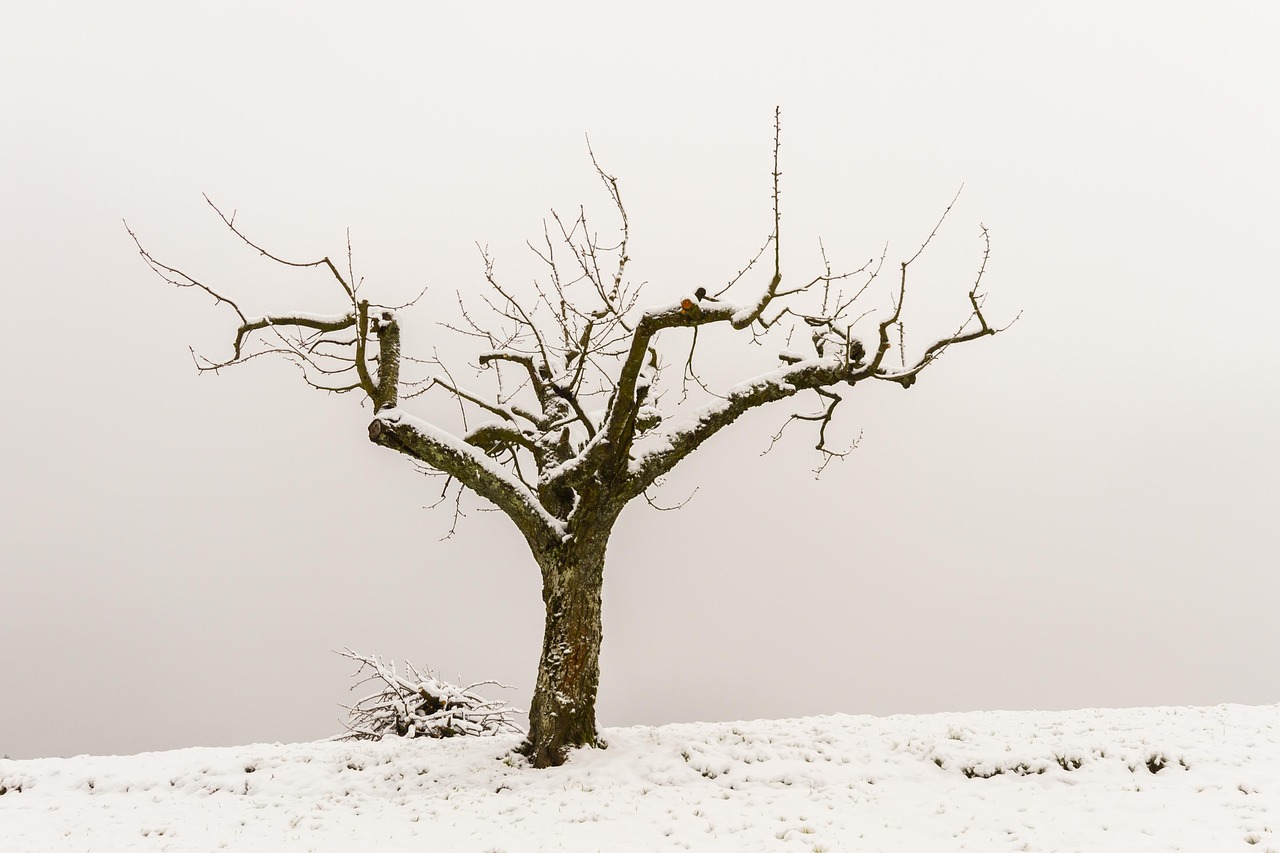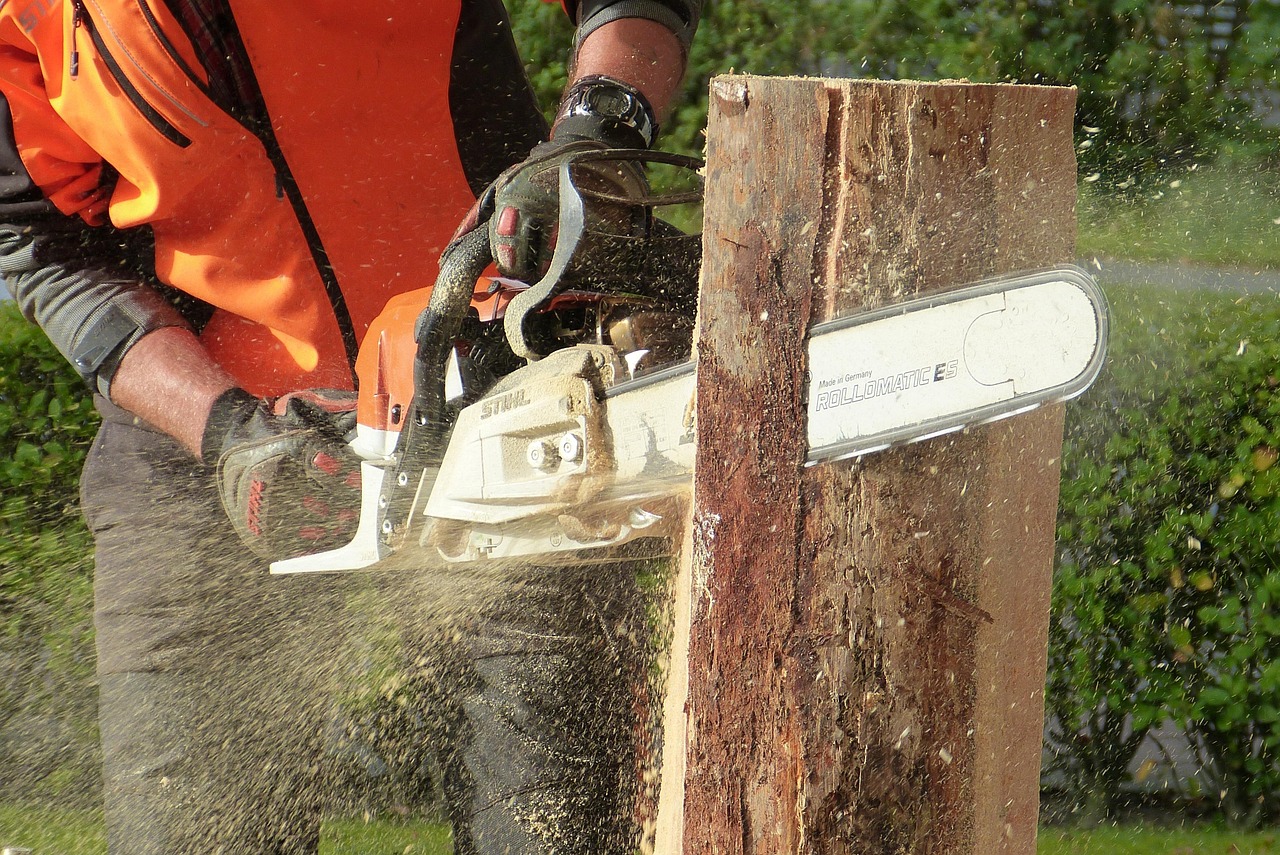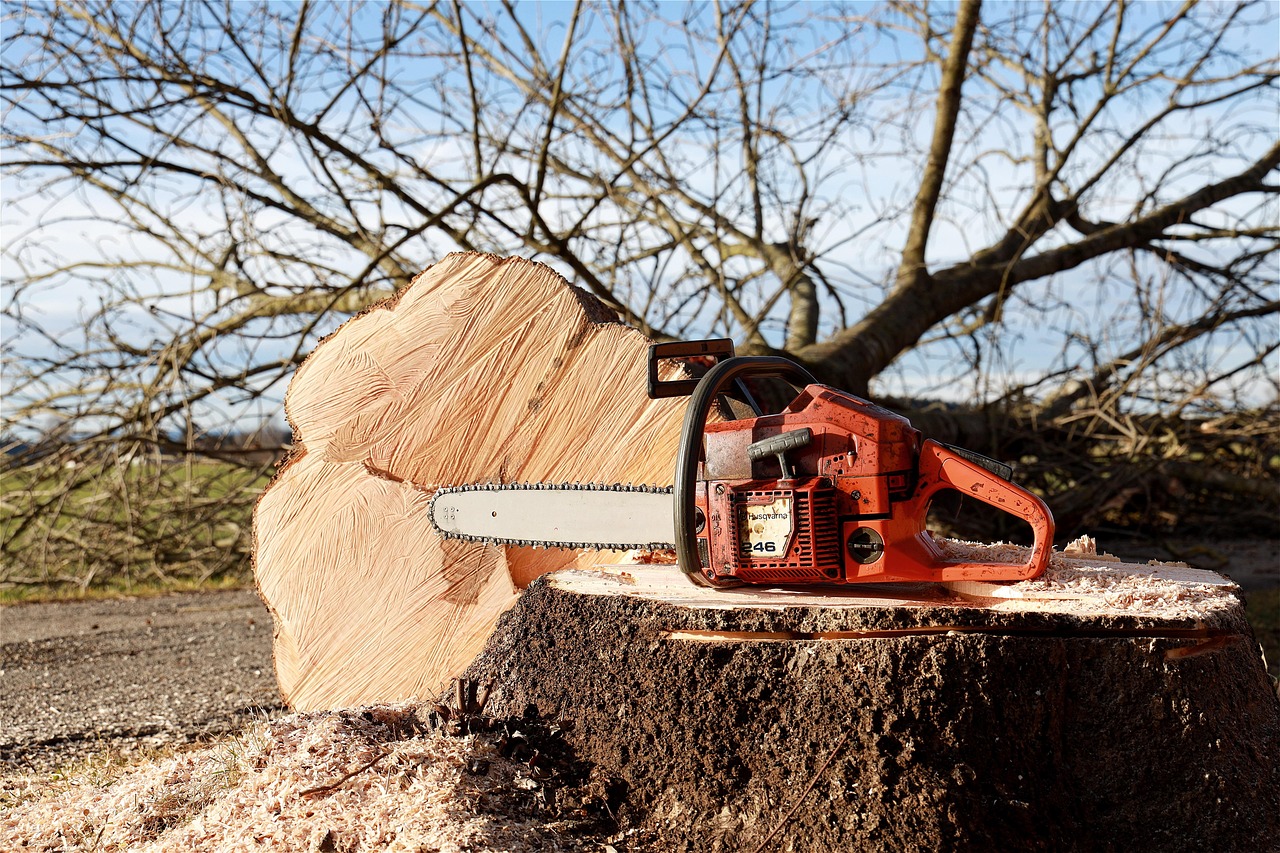Tree pruning around fences and property boundaries is essential for maintaining a neat appearance, ensuring safety, and promoting healthy tree growth. Proper techniques prevent damage to both the trees and nearby structures, while also respecting property lines.
Landscaping plays a vital role in enhancing the aesthetics of a property. Trees are often significant components of this landscape. However, when trees grow close to fences or property boundaries, they can pose challenges. Pruning is a necessary practice that helps manage tree growth while ensuring that they do not encroach upon neighboring properties or structures. Understanding the basics of tree pruning around these areas can lead to better outcomes for both the trees and the landscape.

Pruning involves removing specific parts of a tree, such as branches or roots, to encourage healthy growth and development. When done correctly, it can improve light penetration, air circulation, and overall tree health. In contrast, improper pruning can cause damage to the tree or even lead to its demise. Therefore, it is crucial to follow recommended practices when pruning trees near fences and property lines.
Understanding Property Boundaries
Before engaging in tree pruning, it’s essential to understand property boundaries. Knowing where your property ends and where your neighbor’s begins can prevent disputes and legal issues. Here are some key points to consider:
- Property Lines: These are typically defined in your property’s deed. You may want to consult a surveyor if you’re unsure.
- Local Laws: Different areas have varying regulations regarding tree height, growth, and maintenance near property lines.
- Neighbor Relations: Maintaining good communication with neighbors about tree management can help avoid conflicts.
In some cases, trees may grow over property lines, which complicates the pruning process. It is important to prune responsibly, ensuring that you do not cross over into your neighbor’s property without permission. This is one reason why understanding property boundaries is critical before starting any pruning work.

Benefits of Pruning Trees Near Fences
Pruning trees near fences offers several benefits. Here are some of the most notable advantages:
- Safety: Overgrown branches can pose hazards to nearby structures and pedestrians. Regular pruning reduces the risk of falling branches.
- Aesthetics: Well-maintained trees improve the visual appeal of your property. This is especially important when viewed from the street or neighboring properties.
- Healthier Trees: Removing dead or diseased branches promotes better air circulation and sunlight penetration, which contributes to healthier growth.
- Preventing Damage: Pruning prevents trees from damaging fences or other structures by keeping their growth in check.
Best Practices for Tree Pruning Around Fences
When it comes to pruning trees around fences and property boundaries, there are some best practices that should be followed. These guidelines can help ensure that the process is done safely and effectively:
- Assess the Tree: Evaluate the tree’s health and structure before making any cuts. Look for dead or diseased branches that need removal.
- Use Proper Tools: Always use sharp, clean tools for pruning. This reduces the risk of damaging the tree or spreading disease.
- Follow Pruning Techniques: Use the three-cut method for larger branches to prevent tearing. Make precise cuts at a slight angle.
- Stay Clear of Fences: Keep branches trimmed at least a few inches away from fences to prevent damage and allow for fence maintenance.
- Know When to Prune: The best time to prune most trees is during late winter or early spring before new growth begins.
By following these practices, homeowners can effectively manage their trees while minimizing the risk of conflicts with neighbors and damage to property. Being mindful of both legal and practical considerations ensures that tree pruning supports both aesthetic goals and healthy tree growth.

Tools Required for Pruning
The right tools make all the difference when it comes to effective tree pruning. Here are some essential tools you should consider having on hand:
| Tool | Description |
|---|---|
| Pruning Shears | Ideal for cutting smaller branches and shaping plants. |
| Loppers | Used for larger branches that are too thick for shears. |
| Saw | A hand saw or pole saw for cutting larger branches. |
| Gloves | Protect hands while working with thorns or rough bark. |
| Ladder | A sturdy ladder may be needed for taller trees. |
Having these tools ready will make the pruning process smoother and more efficient. Ensuring that you are well-equipped is part of responsible tree care and management around fences and property boundaries.
Common Tree Types and Their Pruning Needs
Different tree species have unique growth patterns and pruning requirements. Understanding the specific needs of the trees on your property is crucial for effective pruning, especially when they are near fences and property lines. Below are some common tree types and their general pruning needs:

- Deciduous Trees: These trees lose their leaves in the fall. They often require pruning in late winter or early spring before new growth starts. Common examples include oaks, maples, and birches.
- Evergreen Trees: Evergreens retain their foliage year-round. They can be pruned in late spring or summer after their new growth has hardened. Examples include pines, spruces, and firs.
- Fruit Trees: Pruning fruit trees is essential for fruit production. These trees typically need pruning in late winter to early spring, focusing on removing dead wood and opening the center for sunlight. Examples include apple and cherry trees.
- Flowering Trees: These trees often bloom in the spring. Pruning should occur after flowering to avoid removing potential blooms. Examples include dogwoods and magnolias.
Understanding Growth Patterns
Each tree species exhibits different growth patterns, which can influence how and when you prune them. Here are a few key growth characteristics to consider:
- Growth Rate: Fast-growing trees may need more frequent pruning to keep them manageable, while slow-growing trees may require less intervention.
- Branch Structure: Some trees have a pyramidal shape that requires different pruning techniques compared to those with a more rounded shape.
- Height and Spread: Taller trees may require specialized equipment for pruning, whereas smaller trees can often be managed without ladders.
Seasonal Considerations for Pruning
The time of year significantly affects the best practices for pruning trees. Each season presents unique opportunities and challenges:
Winter Pruning
Winter is often the ideal time for pruning most trees. During this time, trees are dormant, which minimizes stress and allows for better healing. Benefits of winter pruning include:
- Reduced risk of disease transmission since many pests and diseases are inactive.
- Better visibility of the tree structure without leaves, making it easier to identify problem areas.
- Encouragement of vigorous growth in the spring as the tree emerges from dormancy.
Spring Pruning
Spring is a time of rejuvenation for trees. Pruning during this season can still be beneficial, particularly for those that flower later in the season. However, it is essential to be aware of potential risks:
- Pruning too early may remove buds that will develop into flowers.
- Wounds may heal more slowly due to increased sap flow.
- Pests may be more active, increasing the risk of disease transmission.
Summer Pruning
Summer pruning can help control tree size and shape while promoting airflow within the canopy. This method is particularly useful for:
- Removing dead or diseased branches that may be more visible during the active growth period.
- Trimming back excessive growth to maintain a desired shape.
- Aiding in the training of young trees by encouraging desirable growth habits.
Fall Pruning
Fall is generally not recommended for most trees due to the increased risk of disease and pests. However, if necessary, consider the following:
- Avoid heavy pruning that can stress the tree before winter.
- Focus on minor maintenance cuts rather than significant reductions.
The Importance of Proper Technique
Using proper techniques when pruning is vital for the health of the tree. Incorrect methods can lead to injury and long-term damage. Here are some techniques to keep in mind:
The Three-Cut Method
This method is particularly useful for larger branches. It prevents tearing and damage to the tree’s bark:
- Make an undercut about one-third of the way through the branch, several inches from the trunk.
- Make a second cut from the top, further out on the branch, until it falls off.
- Finally, make a clean cut at the trunk, just outside the branch collar.
Avoiding Topping
Topping is an improper practice that involves cutting away large portions of a tree’s crown. This can lead to:
- Increased vulnerability to diseases and pests.
- Lack of natural shape and aesthetics.
- Weak new growth that may break easily.
Instead of topping, aim for selective thinning or reducing height through proper techniques that maintain tree health.
Legal Considerations When Pruning Near Property Lines
When pruning trees near property boundaries, it is essential to be aware of any legal considerations that may impact your actions. These regulations can vary significantly depending on local ordinances or homeowner association rules:
- Property Rights: You typically have the right to prune branches that extend into your property, but you cannot trespass onto your neighbor’s land without permission.
- Nuisance Laws: If branches or roots are causing damage to fences or structures, you may have grounds for action under nuisance laws.
- Tree Preservation Ordinances: In some areas, specific trees may be protected by local laws. Always check before proceeding with any significant pruning.
Navigating these legal aspects helps prevent conflicts with neighbors and ensures responsible tree care practices around fences and property boundaries.
Signs That Trees Need Pruning
Recognizing when a tree needs pruning is essential for maintaining its health and ensuring safety around fences and property boundaries. Several signs indicate that it’s time to take action:
- Dead or Dying Branches: Branches that are brown or brittle are likely dead or dying and should be removed to prevent potential hazards.
- Overhanging Branches: Branches that extend too close to fences, roofs, or power lines may need trimming to avoid damage.
- Crossing Branches: Branches that rub against each other can create wounds, which may lead to disease. Pruning them can prevent this issue.
- Increased Density: If the tree appears overly dense, it may need thinning to improve air circulation and sunlight exposure.
- Pests or Disease: Signs of infestation or disease include unusual growths, discoloration, or spots on leaves. Pruning may help manage these issues.
How to Assess Tree Health
Before pruning, it’s essential to evaluate the overall health of the tree. A healthy tree will respond better to pruning and recover more quickly. Here are steps to assess tree health:
- Inspect the Leaves: Healthy leaves are typically green and vibrant. Look for signs of wilting, discoloration, or spots.
- Check the Bark: The bark should be intact and not peeling excessively. Cracks or holes can indicate pests or disease.
- Look for Fungal Growth: Fungi growing on the trunk or around the roots can signal decay. This may require consulting an arborist.
- Examine Roots: Roots should be firm and not exposed. Soft or mushy roots may indicate rot.
The Role of an Arborist
If you’re uncertain about a tree’s health or the appropriate pruning techniques, consulting a certified arborist is a wise decision. Arborists are trained professionals who can assess tree health and provide expert advice. Here are some benefits of hiring an arborist:
- Expert Assessment: Arborists can accurately diagnose tree issues that may not be visible to the untrained eye.
- Safe Practices: They follow safety protocols and have the tools necessary to prune trees safely, especially large ones.
- Long-Term Care: An arborist can develop a long-term care plan that includes regular maintenance and monitoring.
Environmental Considerations When Pruning
Pruning is not just about aesthetics; it also plays a role in environmental health. Consider these factors when planning your pruning activities:
Biodiversity and Wildlife
Trees provide crucial habitats for various wildlife species. When pruning, consider the following:
- Nesting Season: Avoid pruning during spring when many birds are nesting.
- Pollinator Protection: Be mindful of flowering trees that attract pollinators. Pruning should align with their blooming cycles.
Soil Health
The health of the soil surrounding your trees can be affected by pruning practices. Consider these points:
- Mulching: After pruning, applying mulch can help retain moisture and improve soil quality.
- Avoiding Soil Compaction: Heavy machinery used for pruning should be kept away from tree root zones to prevent damage.
Common Mistakes to Avoid When Pruning
Pruning can be beneficial if done correctly, but there are common mistakes that homeowners should avoid:
- Over-Pruning: Removing too much foliage can stress the tree and hinder its ability to photosynthesize.
- Poor Cut Placement: Making cuts too close to the trunk can damage the tree’s bark, while cuts too far away can leave a stub that is susceptible to disease.
- Lack of Planning: Pruning without a clear plan can lead to haphazard cuts that detract from the tree’s natural shape.
The Importance of Timing
Timing is critical when it comes to pruning. Each tree species has its optimal pruning window, which should be adhered to in order to avoid stress on the tree and maximize health benefits. Understanding the best times to prune different types of trees is crucial for successful maintenance.
Tools Maintenance for Effective Pruning
Ensuring your tools are well-maintained is essential for effective pruning. Here are some tips for keeping your tools in top shape:
- Sharpen Blades: Sharp blades make cleaner cuts, reducing damage to the tree.
- Cleansing Tools: Clean your tools between uses to prevent the spread of diseases.
- Regular Inspections: Check tools for wear and tear regularly, replacing any damaged equipment as needed.
Caring for Trees Post-Pruning
After pruning, it’s important to care for your trees properly. Here are some post-pruning care tips:
- Watering: Ensure that trees receive adequate water, especially during dry spells, as they may need extra hydration after pruning.
- Monitoring Growth: Keep an eye on the tree’s recovery and growth patterns in the weeks following pruning.
- Pest Management: Watch for any signs of pests or diseases that may arise after pruning.
This ongoing care will help ensure that your trees remain healthy and thrive after undergoing pruning near fences and property boundaries.
Long-Term Tree Management Strategies
Beyond the immediate benefits of pruning, adopting a long-term tree management strategy is essential for maintaining healthy trees near fences and property boundaries. Here are some strategies to consider:
Regular Maintenance Schedule
Establishing a regular maintenance schedule can help ensure that trees are pruned appropriately over time. Consider the following:
- Annual Inspections: Conduct yearly inspections to assess tree health and determine if pruning is necessary.
- Seasonal Adjustments: Adapt your pruning schedule based on seasonal changes and the specific needs of each tree species.
- Documentation: Keep records of all pruning activities, including dates, types of cuts made, and observed tree responses.
Soil and Fertility Management
The health of the soil around your trees plays a vital role in their overall well-being. Consider implementing these practices:
- Soil Testing: Conduct soil tests to determine nutrient levels and pH balance, allowing you to amend the soil as needed.
- Fertilization: Use organic fertilizers to promote healthy growth, especially after significant pruning.
- Mulching: Apply mulch around the base of trees to retain moisture, suppress weeds, and improve soil quality over time.
Community and Environmental Impact
Tree pruning has broader implications than just individual property management. Effective tree care contributes to community aesthetics and environmental health. Here are some key points to consider:
Enhancing Community Aesthetics
Well-maintained trees contribute to the beauty of neighborhoods. Community engagement can enhance tree care efforts:
- Neighborhood Pruning Days: Organize events where residents can come together to prune and care for public trees.
- Educational Workshops: Host workshops to educate community members about the importance of tree care and proper pruning techniques.
Environmental Benefits
Trees provide numerous environmental benefits, including improving air quality, providing shade, and supporting local wildlife. Responsible pruning practices help ensure these benefits continue:
- Biodiversity Promotion: Healthy trees support various species of birds and insects, contributing to local biodiversity.
- Carbon Sequestration: Maintaining healthy trees allows them to effectively sequester carbon, which helps mitigate climate change.
Safety Considerations During Pruning
Safety should always be a top priority when it comes to tree pruning. Here are essential safety tips to keep in mind:
- Wear Protective Gear: Always wear gloves, goggles, and a hard hat if working under large branches or using power tools.
- Check for Hazards: Before starting, ensure there are no electrical lines or obstacles in the vicinity that could pose risks during pruning.
- Work with a Partner: Having someone nearby can provide assistance in case of emergencies or if heavy limbs need to be managed.
Final Thoughts
Understanding the complexities of tree pruning around fences and property boundaries is crucial for maintaining both aesthetics and safety. Proper pruning techniques not only enhance the beauty of your landscape but also contribute to the long-term health of your trees. Key takeaways from this article include the importance of recognizing signs that indicate when trees need pruning, understanding the specific needs of different tree species, and incorporating safe practices into your pruning routine.
By adopting a proactive approach and implementing regular care strategies, you can ensure that your trees thrive while also respecting property lines and neighborhood dynamics. Whether you choose to manage your trees yourself or seek the assistance of professionals, being informed about proper techniques and legal considerations will lead to better outcomes for your landscape and community.
Ultimately, healthy trees are a valuable asset not only to your property but also to the environment as a whole. Engaging with your community about tree care can foster a shared appreciation for nature and promote sustainable practices that benefit everyone.
